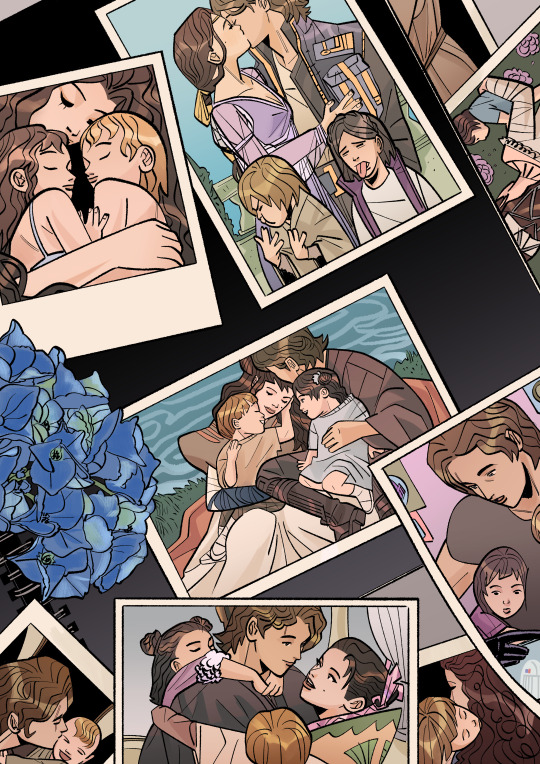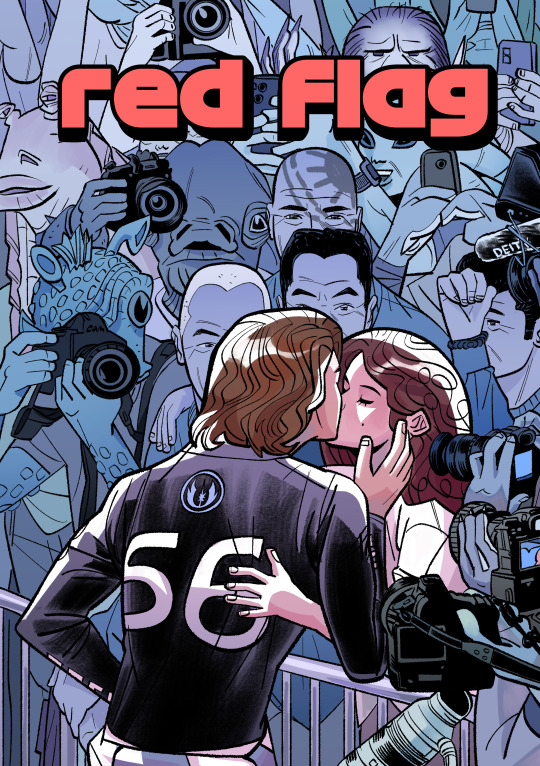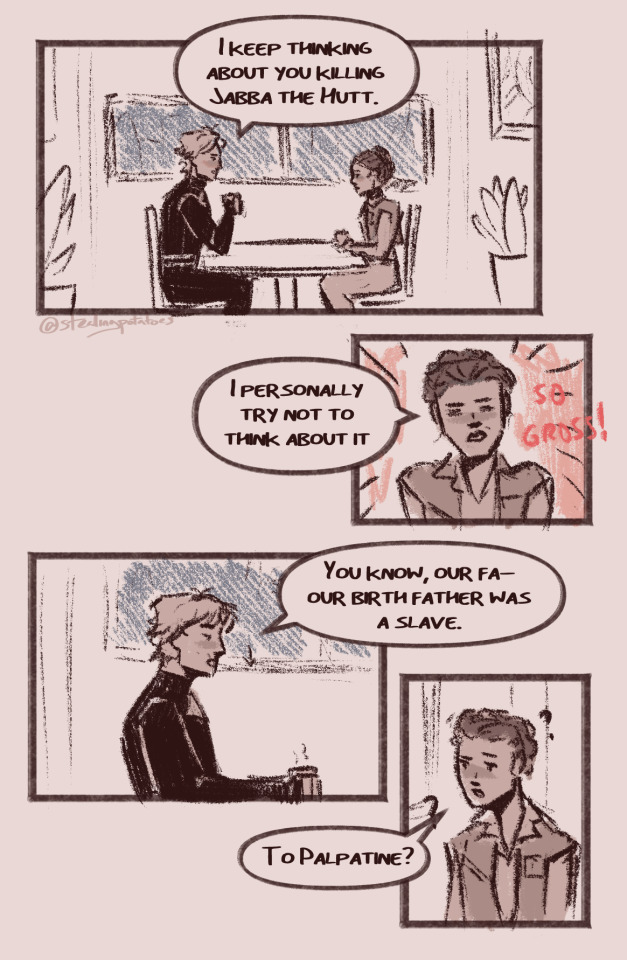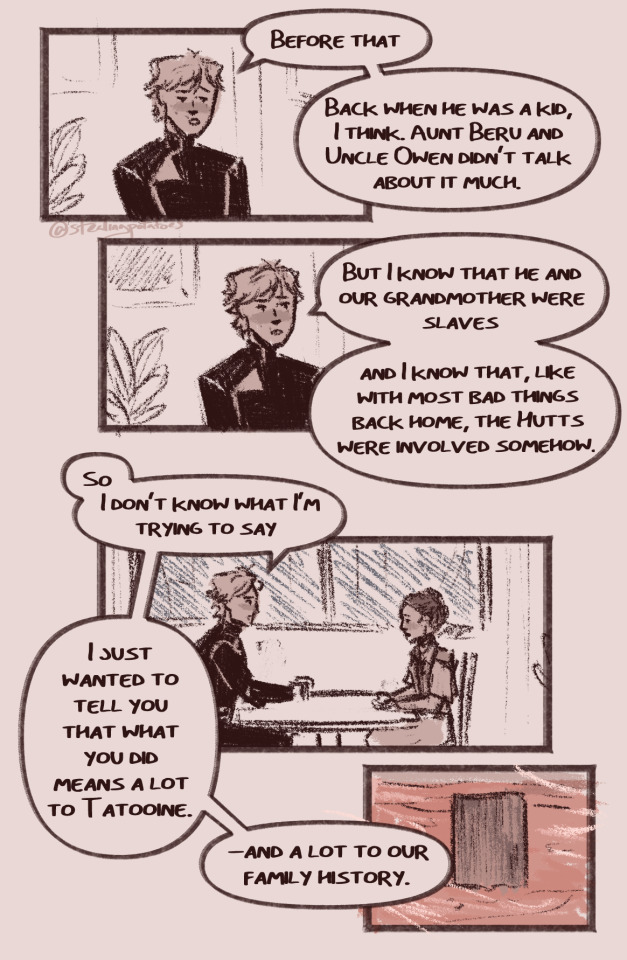jillian•Christ first of all•chronically just a little bit late•piano major, but i also write, draw, and do some poetry-aspiring piano and violin teacher-composer•star wars-(Rey apologist)•star trek-(AOS apologist)•ghibli-(lover of castle in the sky)•various other fandoms
Don't wanna be here? Send us removal request.
Text
in fics where luke gets plopped into the prequels i want every jedi within ten metres of him to think hes the weirdest jedi theyve ever seen. he has negative lightsaber form. he doesnt know what a kata is. he handstands when he meditates. his solution to sith is to try and have a chat. hes a political radical who keeps suggesting revolution. you ask him what the jedi code is and he says "kindness and compassion and helping those in need :) ". you ask how he used the force like that and he says some shit about how you are a luminous being limited only by your mind. the councils authority is just a suggestion. he is somehow the new favourite of both qui gon and yoda
47K notes
·
View notes
Text

@anidalaweeks Day 6: Gothic Horror
Padmé and Anakin/Vader in The Phantom of the Opera
(closeups below cut)





378 notes
·
View notes
Text

Ah, Lando would take him shopping
224 notes
·
View notes
Text

샘의 생일선물로 줬던 그림
2K notes
·
View notes
Text

07.13: everything goes right
@anidalaweeks day 1 prompt where Anakin and Padmé get to raise the twins and be happy.... my dream would be to draw a whole comig about this what-if. i didn't have time, so i did a piece that compiles all best memories from our favorite space romeo and juliet!! in my head, in this AU, Anakin leaves the Jedi Order after killing Palpatine and Padmé continues to fight for freedom across the galaxy. Anakin ends up working as a pilot and ativist (and a stay at home dad to). he loves his family dearly, no one tell him Leia will end up dating Han later on.
comms // tip jar
4K notes
·
View notes
Text

just an apple
475 notes
·
View notes
Text

07.13: modern AU
ok this is my first time in like 12 years? that i write a fic and i actually tell people that i did it instead of just posting it in the shadows. but i was in desperate need to have a very geeky formula 1 fic and i could not live without getting this out of my brain and scratching this itch!!! so yea.... BE GENTLE PLS
@anidalaweeks going strong here in my household!!
chapter 3 of red flag (previously called safety car) is out....
comms // tip jar
247 notes
·
View notes
Text
the secret identity I really cant get over in sxf is that anya is four years old pretending to be six. the fact that she is surviving first grade in any capacity is insane. anya girl you should be in preschool 🙏
2K notes
·
View notes
Text



:‘)
Bonus:

315 notes
·
View notes
Text

07.19: free day
wanted to do kinda of a comic cover for my favorite couple ever. as you can see from my very old anidala art, i've been into them for a really really long time.... and i'm so happy that i was able to be a part of @anidalaweeks this year because i'm usually so over my head and always lose these type of stuff.
wanted to end this week with a homage to the duality of anidala and despite it all how much they love each other. how she loves naboo and grew up in such a nice place, and how anakin ends up in mustafar IDK IDK i saw a very cool piece and got inspired by it to draw anidala.
i also want to thank everyone for being so nice about my art!!!! i'm a comic artist, but i also work with art restoration, but i think about giving up on my work as a comic artist/illustrator a lot but all these positive comments about my anidala art made me want to keep trying and keep posting online and keep looking for a way to break into comics, so thank you sososososo much
and thank you to all the friends i've made because of anidala, you guys cheer me up :))))
thanks for having me!!!!!
comms // tip jar
628 notes
·
View notes
Text

I glimpsed my future.
(double slit experiment )
2K notes
·
View notes
Text

The Rise of Skywalker Adaptation #5 (2025) variant cover by David López
40 notes
·
View notes
Note
Do you think Luke knew he was descended from slaves? Do you think he even knew about his grandmother Shmi at all?
i think it would've been pretty hard to avoid/hide, especially given shmi's grave being at the farm. the more fun question is does leia know


(tip jar! // comms status)
12K notes
·
View notes



